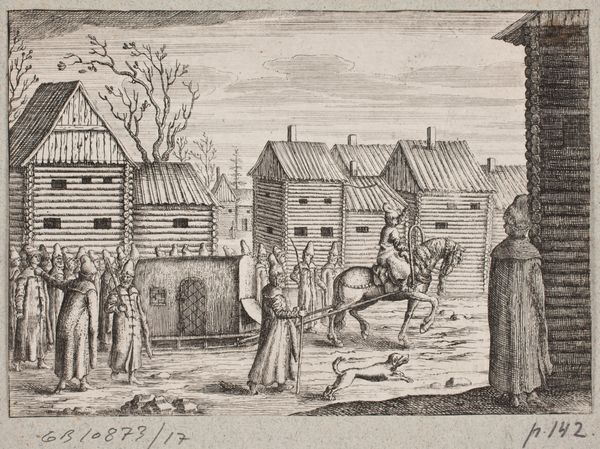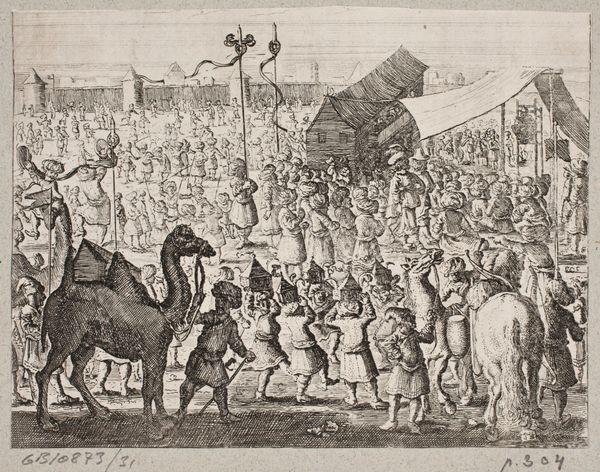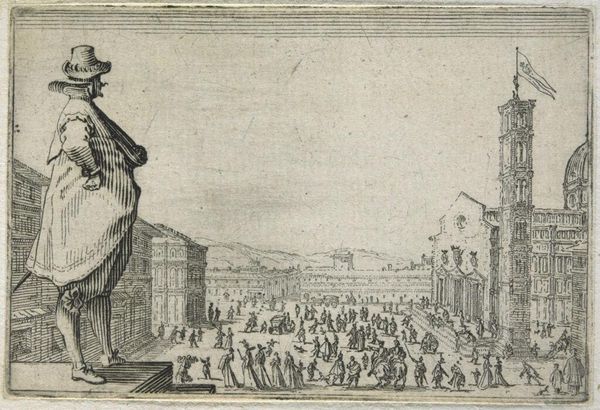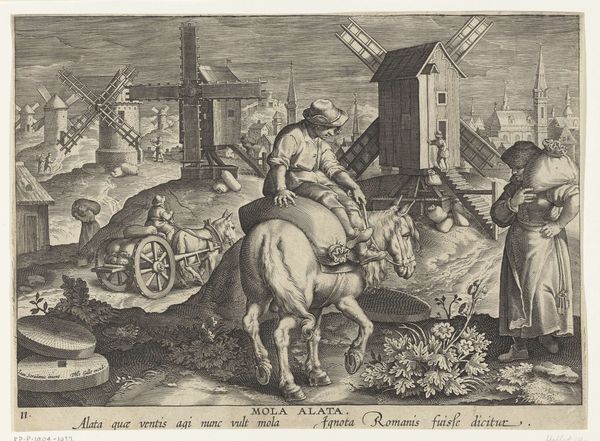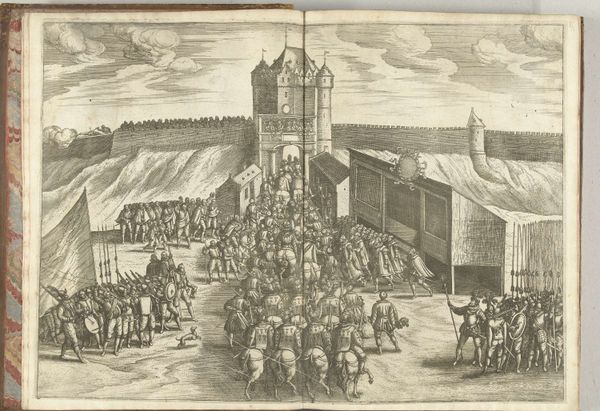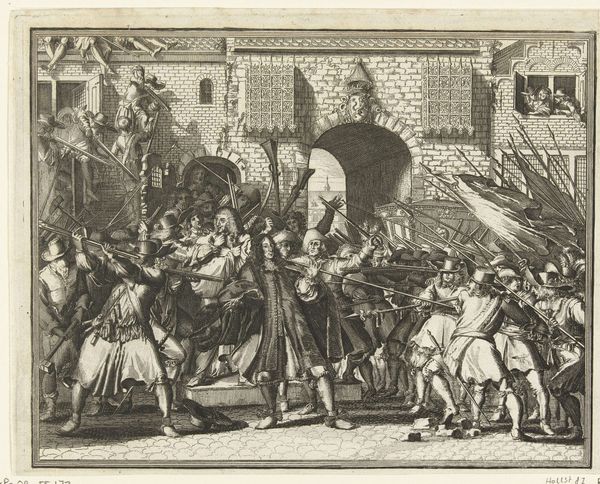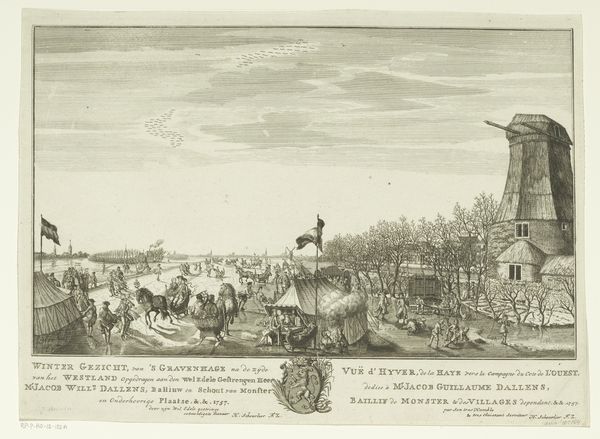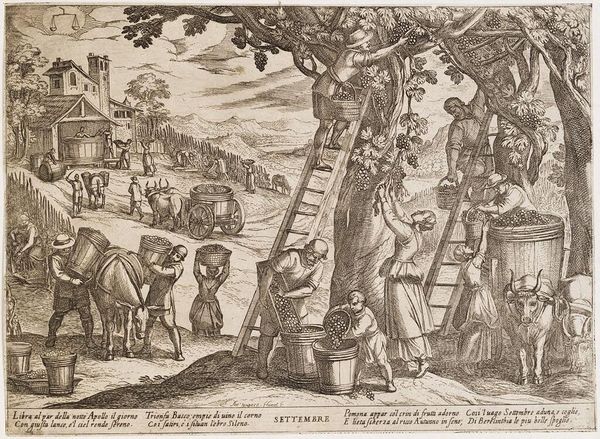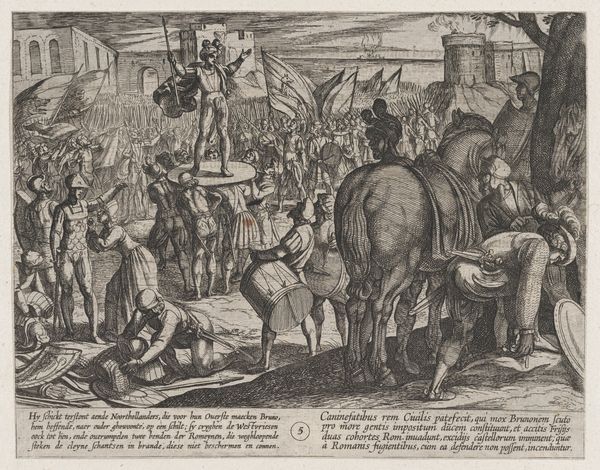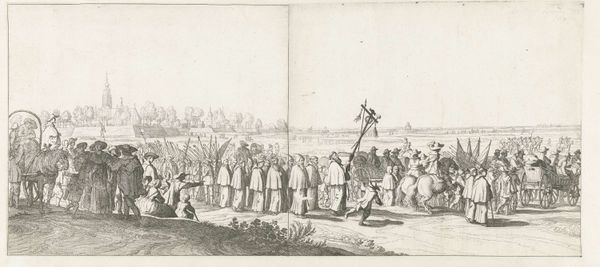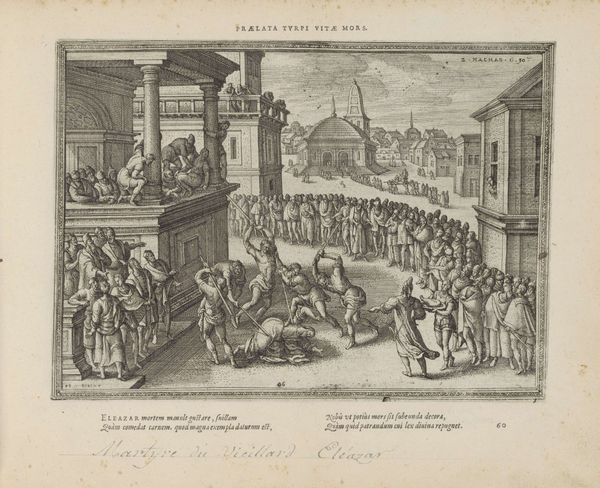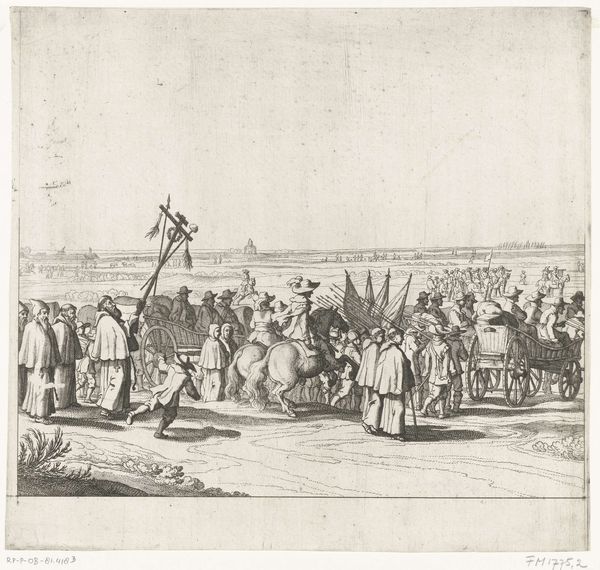
print, engraving
#
dutch-golden-age
# print
#
caricature
#
landscape
#
caricature
#
cartoon sketch
#
cityscape
#
engraving
Dimensions: height 176 mm, width 201 mm
Copyright: Rijks Museum: Open Domain
Jan Caspar Philips created this etching titled 'Portugees op olifant te Pegu' around 1731. The print captures a scene dominated by the imposing figure of an elephant, moving amidst a tense gathering of people and buildings. The composition is structured by linear perspectives. The buildings receding into the distance create a stage-like setting. Philips uses line work to define form and texture—notice the intricate detailing on the elephant's trappings. The etching utilizes light and shadow to create depth. The contrast between the shadowed figures and the brighter areas of the sky gives the scene a dramatic quality. The gaze is drawn to the Portuguese figure atop the elephant, an emblem of authority amidst a potentially volatile colonial context. Philips challenges fixed meanings by presenting a cultural encounter filled with tension. The elephant, typically a symbol of power and exoticism, here becomes a vehicle for colonial display. The artist prompts us to question the power dynamics at play. The formal elements of the artwork—line, perspective, and contrast—function aesthetically and serve as a commentary on cultural and philosophical discourse. The scene remains a site of interpretation, inviting us to consider the complexities of colonial encounters and the representation of power.
Comments
No comments
Be the first to comment and join the conversation on the ultimate creative platform.
